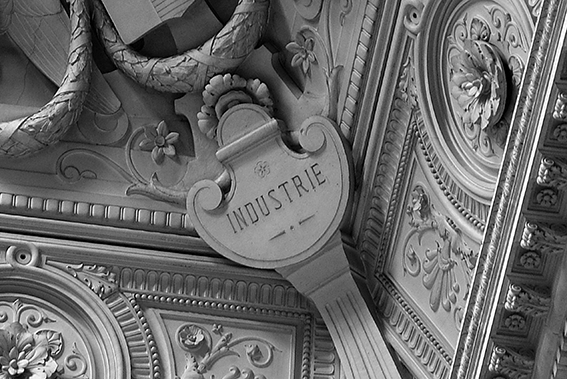Yasmin Ali
Urbanism // Design
ACT Symposium 2: Architecture and the Technological Revolution, 06.02.14
February 12th, 2014
As part of the architecture postgraduate course, Strathclyde University is running a series of symposia, and opening these up to the public as guests and architectural professionals as CPD events. The second in this series was themed around architecture and technological representation, and featured talks from two academics, Prof. Neil Spiller and Dr. Rachel Armstrong.
Neil Spiller is an academic and author based at The University of Greenwich. His work has a recurring theme of issues concerning digital media and architectural representation. He spoke of his longstanding interests in these areas, showing slides to illustrate his talk of key influences and many of his own drawings which blur the boundaries between the handmade, the mechanical and the digital. Key themes included Surrealism; metaphysics; psychogeography; modern art; modernism in general; collage; and concepts borrowed from digital media including Augmented Reality; cybernetics; cyberspace; hyperlinks; and the virtual world.
Spiller also introduced AVATAR, a group founded over 10 years ago at The Bartlett, UCL, along with its seven continuum of Space; Technology; Semiotics; Time; Psychogeography; Scope and Sensitivity. This led on to the introduction of his former colleague and the second speaker Dr. Rachel Armstong, who currently works for the unit. Armstrong has an interested background as a PhD architecture graduate via a biomedical sciences background. This gives her a unique set of skills and position of commentary on key issues, such as the quantification of sustainable outcomes.
After a brief introduction on the meaning and implications of the sustainability agenda, Armstrong set out a thesis that calls for the ontology of process as opposed to the hegemonic object-based philosophy generally pursued in architecture. In addition she cites biomimicry as a suitable tactic to emulate and introduced a series of films of experiments documenting life-like synthetic processes, such as the immiscibility of oil and water, a modern documentation of an experiment originally conducted in the late-eighteenth century. This work was reminiscent of video artist Robert Smithson’s work on entropy, which has been cited by architectural commentators as architecture’s ‘thermodynamic turn’.
Armstrong also introduced the pioneering project ‘Future Venice’, conducted in-situ with a team including Spiller, to use simulated technologies to recreate and reconstruct limestone in Venice’s waterways, to reinforce its foundation systems. She spoke of ‘programmable droplets’, which could ideally respond to changing conditions and assimilate to the marine ecology without further configuration. Citing the evolution of geotherms to angiotherms – or leafy to flowering plants – as a response to carbon fixation needs, Armstrong is hopeful for not only simulated life but evolution to future needs.
// This is the second part of a series of four symposia running weekly until and including the 27th February, except the 13th
Future Venice - here



